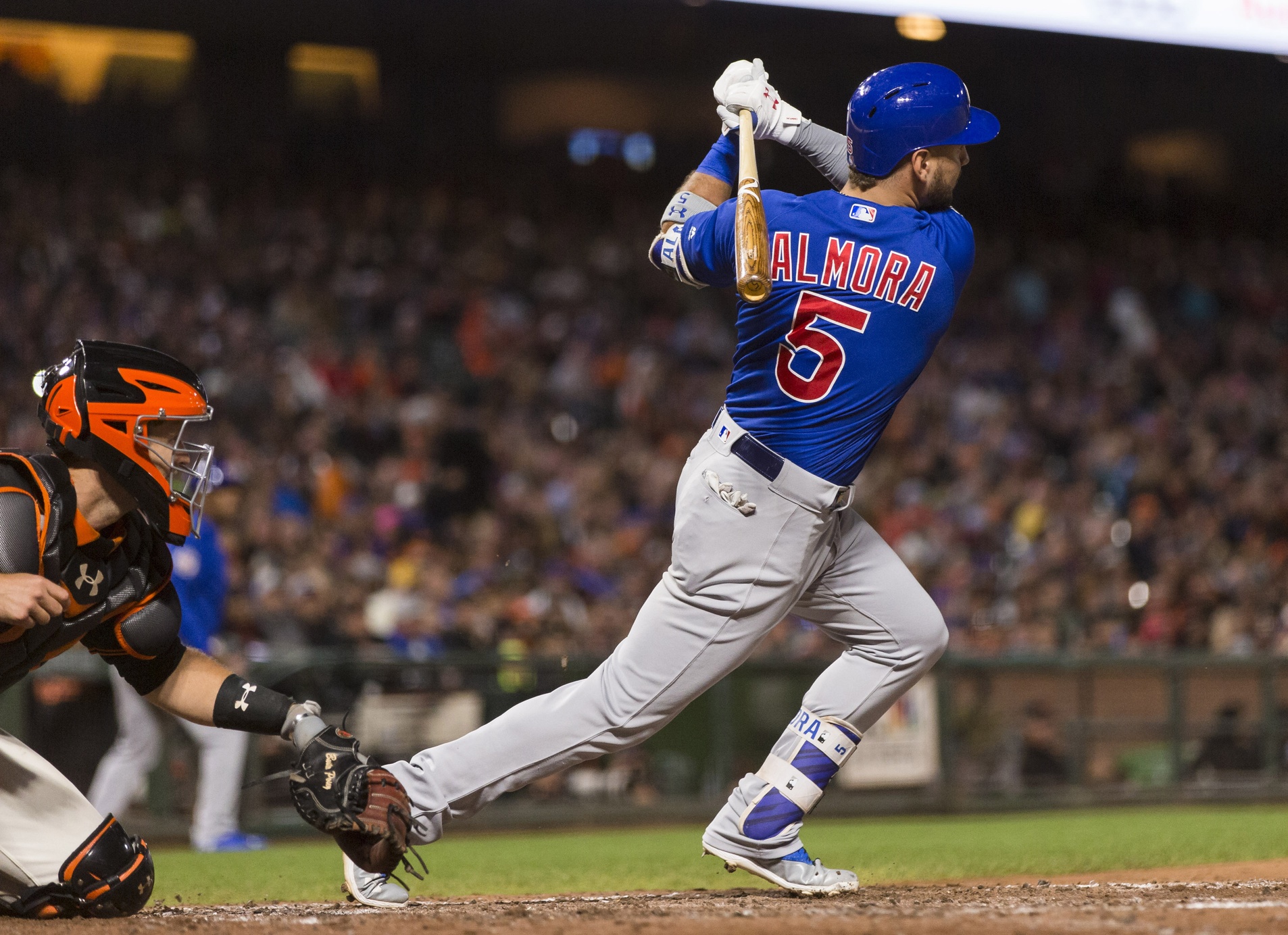As the 2017 season got underway, one of the more questionable elements of the active roster was Albert Almora Jr.’s place on it. With the signing of Jon Jay, the likelihood that Ben Zobrist would see some time in the outfield, and the existence of Kyle Schwarber and Jason Heyward, it remained to be seen how much of an opportunity Almora would have had to emerge as a consistent presence within the lineup. For a player in need of development, particularly on the offensive side, it wasn’t entirely an ideal scenario.
Yet, despite the fact that a relatively crowded offensive roster has prevented Almora from cracking the lineup with the regularity he might have preferred, there might be reason to think that this has been the best case scenario for Albert Almora, both in the present and in his future endeavors on the North Side. This is true when you consider the idea of easing a player into a role, allowing him adequate time to develop in certain respects, just as Almora has done this year.
Despite only starting 51 games thus far in 2017, Almora has actually turned in some pretty solid production. At worst, it’s been average. At best, Almora has been among the more productive players coming off the bench across baseball. His slash features a .278 average and .332 on-base percentage. There hasn’t been a ton of pop there, with an isolated power figure of only .127, but TAv likes Almora as a just about average performer, at a .257 mark. It’s not production that’s going to blow anybody away, but there are some strides being made here in a situation that might actually serve as the best possible situation for Almora as he moves forward.
Let’s first discuss the improvements that Almora has made throughout the course of his first full season at the big league level. For one, the walk rate is up. In fact, his 7.7% BB rate is the highest of his professional career, regardless of level. His 3.54 pitches per plate appearance represents a decent increase from last season. It’s not a monumental increase, but the approach is visibly improving. He’s also managed to demonstrate hard contact at a slightly higher rate, while posting an opposite field percentage just a touch over 26% percent, which really speaks to his development as a hitter and contributes to the improvements related to his approach.
Of course, that doesn’t mean that everything is coming up right Almora. After all, it was just last month that I discussed an increased role for him and came to the conclusion that his bat was not impactful enough to warrant more playing time on a relatively crowded roster. He’s making a relatively high amount of soft contact. At the same time, if he can return even to his level of power from last season, when he notched a .179 ISO, he’d be that much more valuable an offensive entity in the lineup. Interestingly enough, he’s making contact at just about the same rate that he did last year.
If he can combine the improved approach with an ability to make consistently hard contact, there’s reason to remain optimistic that he can provide far more pop than he’s demonstrated this season. Maybe that means getting back to swinging at more fastballs, where he’s experienced a decrease from 2016. Regardless, there are at least some encouraging signs as far as Almora representing an impact bat moving into the future.
And that leads to the idea that this season could actually represent a potential best case scenario for Almora and the Cubs. There were very few, if any, that expected him to take a huge leap forward on offense and subsequently latch onto a starting job over some of the other veterans on the roster. As such, the fact that he’s demonstrating visible improvement, primarily as far as the approach is concerned, and serving as a valuable bat off the bench (as well as continuing to provide stability with the glove) is about as positive a result as the Cubs could have hoped for. Not every prospect is the same, and easing Almora into a role, rather than throwing him into the fire, could be what he needed in order to garner more confidence and refinement moving forward.
It’s the combination of that development and Almora’s current role that could have his stock pointing up. Could he be the team’s starting centerfielder in 2018? Much of that will depend on the personnel around him, but he’s leaving signs that he could be ready for the role. And serving in a reserve capacity this season has allowed him to develop and make those adjustments as necessary without being hampered with the pressure of maintaining the team’s offensive exploits.
The 2018 season is going to be a pretty telling one. It’ll likely be expected that Almora puts all of these signs together into something tangible, in terms of his entire skill set. Of course, a lot can happen between now and Opening Day next spring, both in terms of whether Almora finds his way out for pitching or whether the personnel around him changes. Nonetheless, the fact that he’s demonstrated marked improvement in some pretty essential areas, while at the same time remaining an important contributor despite a relatively limited role, makes Albert Almora far more of an impactful presence than he’s likely been given credit for and leaves some encouraging signs for him moving forward.
Lead photo courtesy John Hefti—USA Today Sports
